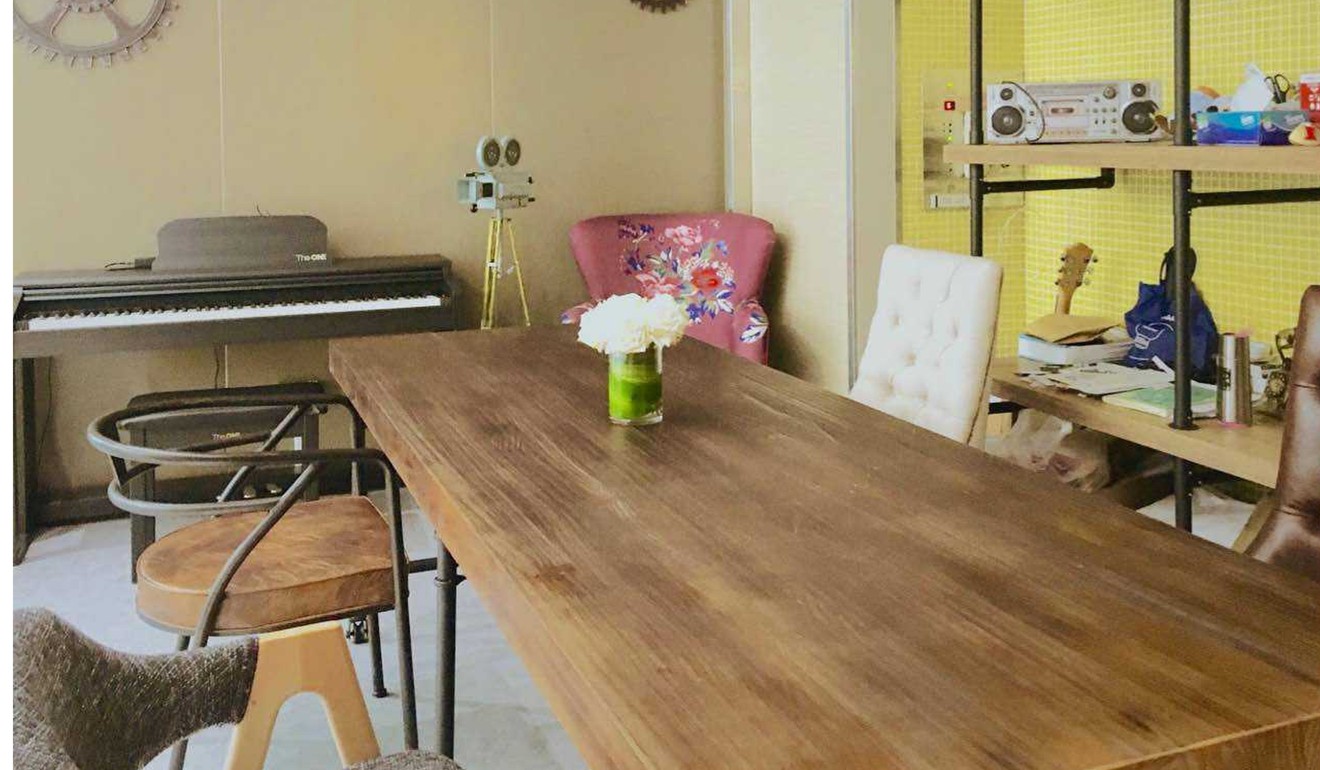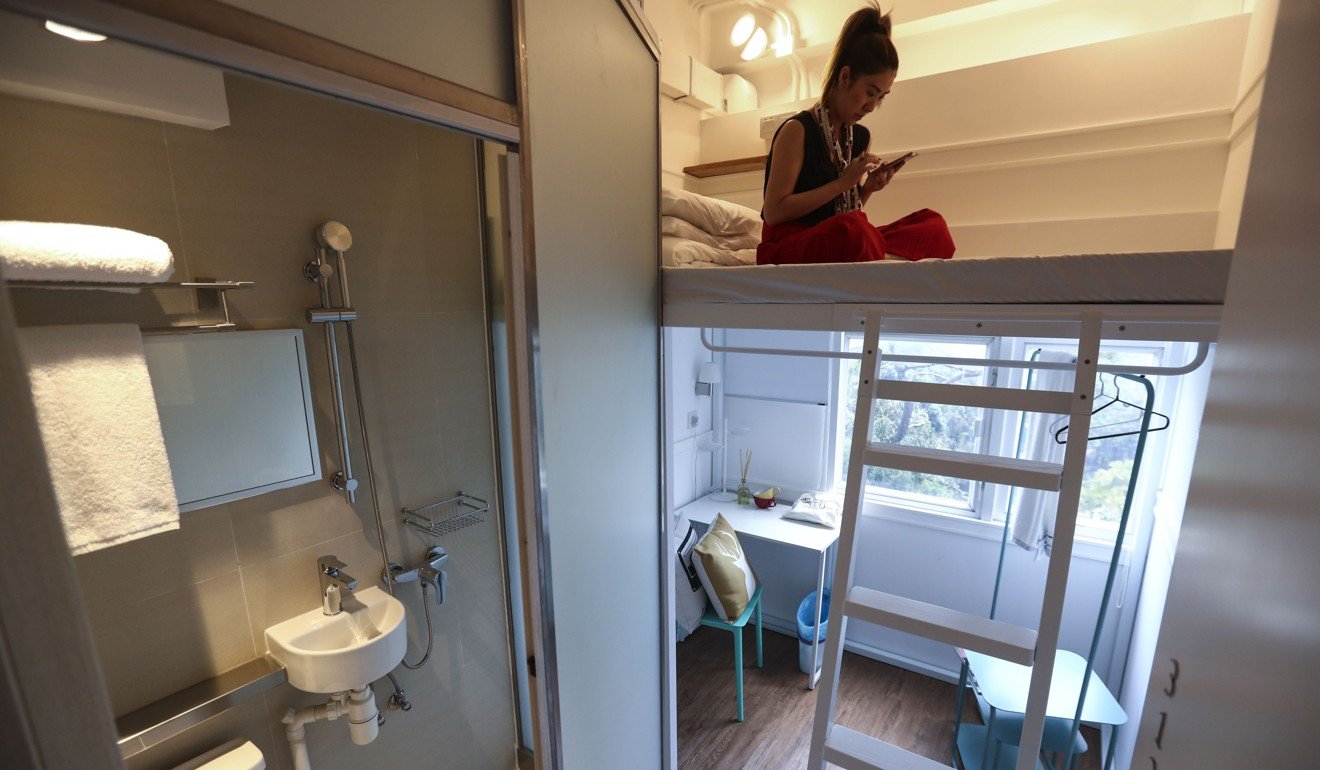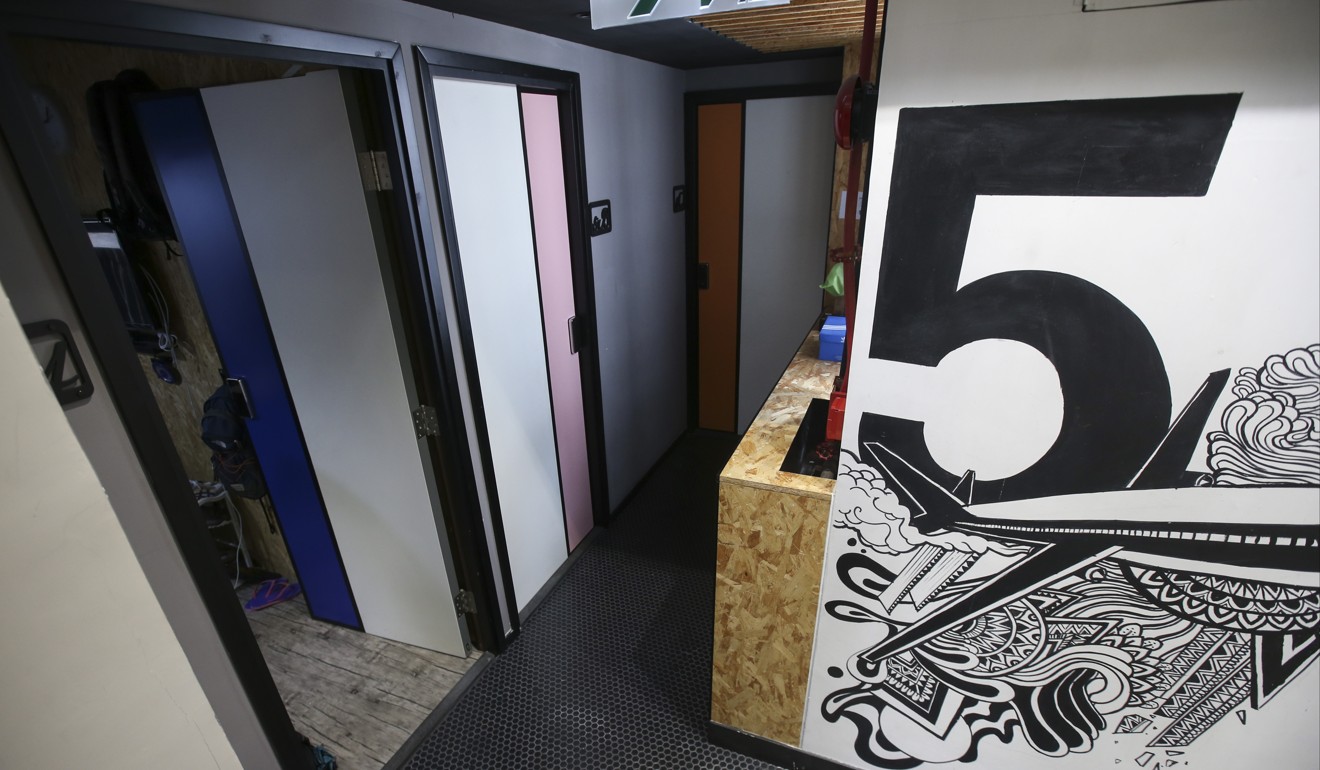
Co-living the new norm for young professionals priced out of Hong Kong’s property market
Cheap rents, good facilities and a sense of belonging to a community have drawn many to take up residence in co-living blocks. And developers are also taking note
Safe, cosy and above all, affordable: a rare thing in Hong Kong, one of the world’s most expensive places to find a home.
But those are precisely the attributes that are driving young professionals in the city to opt for co-living spaces – small rooms built around communal living and cooking areas.
“It gives you a lot of flexibility, I can have my own private space while making friends,” said Andy Dong, 27, a corporate finance banker who has lived in the M3 International Youth Community for a year.
He finds renting a 170 sq ft fully furnished room with a private bathroom for HK$10,000 (US$1,280) a month the most cost effective choice, with regular studio flats too expensive and flat-sharing not offering privacy. And living alone in a new city for the first time, the Beijing native doesn’t feel lonely.
“At least you can find someone to give you a hand when you got sick,” he said.
M3 was one of the very first co-living spaces to appear in Hong Kong two years ago, combining private rooms with common areas such as kitchens, gyms, living rooms and event venues. It now has three locations in Kowloon: Tsim Sha Tsui, Prince Edward and Sham Shui Po.

They have attracted not just students, for whom such a living style is quite common in college halls of residence, for example. About 70 per cent of M3’s tenants work in professional fields such as banking, law and accountancy, and most are aged from 22 to 28, said M3 co-founder Samuel Gu.
And here is why. Rooms at M3 range from HK$4,500 to HK$13,600 a month, with the cheapest ones having communal bathrooms.
By comparison, the average cost of renting a typical 450 sq ft flat has risen for 17 consecutive months since March 2016 to HK$15,900 per month, according to Centaline Property data, with some studio flats in prime areas costing even more than that.
At the same time, the average starting salary for new graduates has remained almost unchanged in the past 20 years, at slightly over HK$10,000. Dong, who works in a traditionally higher paying sector, is still using up half of his monthly income for his M3 room.
Gu said it is not only cost that attracts tenants, but also the sense of community and services. For example, he said that prospective tenants must have an interview to make sure they are outgoing and sociable. Since most residents are from mainland China, M3 sets up WeChat groups for those come from the same provinces or who have similar hobbies, and lines up activities such as hiking and film screenings.
Developers are also seeing the benefit of co-living spaces. Eton Properties recently converted 18 flats in a luxury complex in Shouson Hill, in the south of Hong Kong Island, into 270 units to rent out as co-living spaces.
Named Mini Ocean Park Station, because of its proximity to the Ocean Park tourist destination, the development offers rooms between 80 and 200 sq ft with all-inclusive monthly rents starting from HK$7,500.

Originally targeting students, marketing manager Cynthia Cheung said the space has already attracted a government chemist, someone who works at a multinational company, and four finance industry professionals .
“We want to bring out the concept that enjoying a certain quality of living doesn’t necessarily mean having to pay sky-high prices,” she said. “Although the rooms are quite small, we encourage residents to come to our open spaces to chill out and chat with their neighbours,” she said.
There are at least 10 more co-living developments in the pipeline in Hong Kong. However the city is lagging behind Europe and the US in promoting the concept, said Keith Wong, the co-founder of Synergy Biz Group, which provides co-working and co-living spaces across Hong Kong.
“It’s not easy to find suitable buildings to redevelop into co-living spaces within a budget,” he said.
The company’s first co-living project was SynBOX in Hung Hom in 2016, and it is set to open a second in Mong Kok in September.
Starting with rents as low as HK$3,000 a month, they offer a different take on the co-living concept, with only capsule-size rooms and bigger common spaces shared by tenants for eating and studying and communal showers.

There are about 400 applicants for the available 120 beds in the Mong Kok project, called Bibliotheque, Wong said.
Mini Ocean Park Station’s Cheung, meanwhile, said she hoped to see more young people saving enough money through living in co-living spaces to pursue their dreams or get on the property ladder.
“To be honest, it’s still sad, if home prices weren’t that crazy in our city, people wouldn’t go for co-living,” she said.

